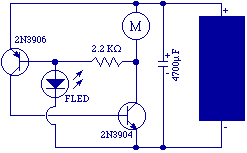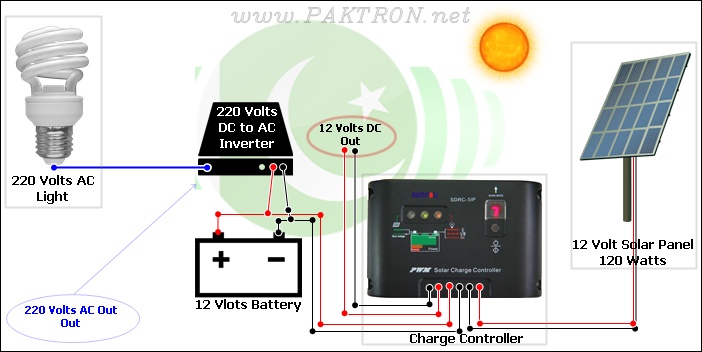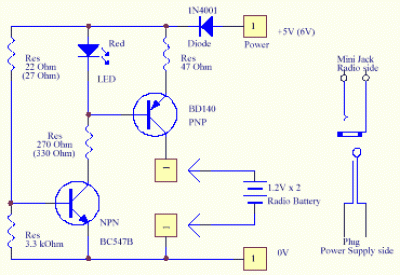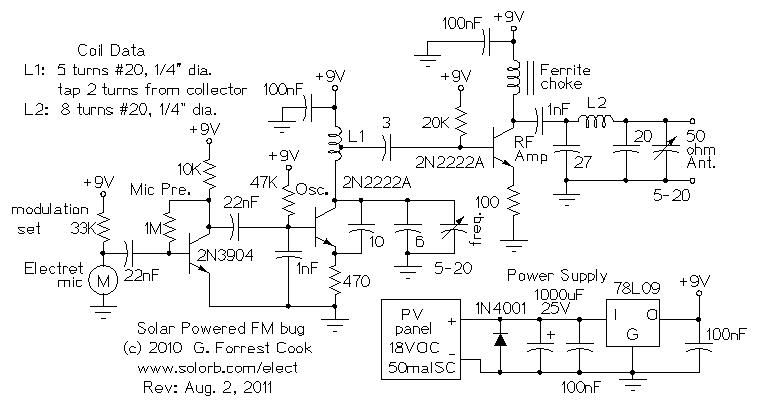
Solar panel
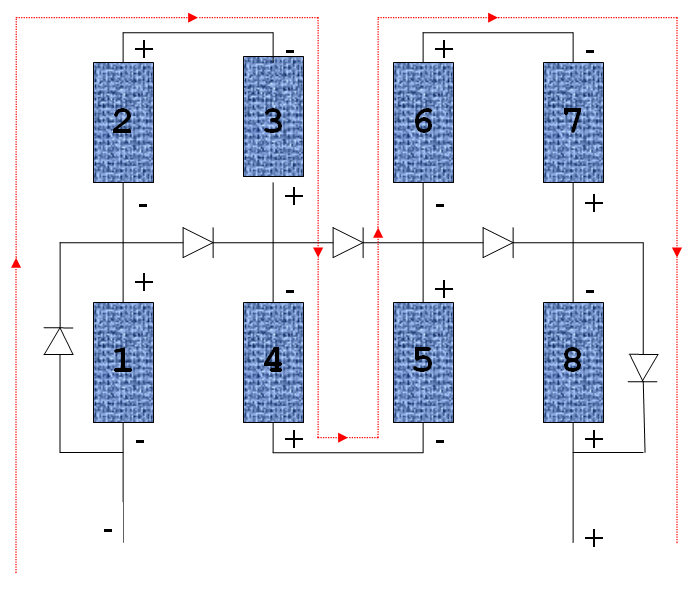
A solar panel is a device that collects solar energy and converts it into electricity. It consists of a backing material on which solar cells are affixed. These cells are interconnected, ultimately linking to an electric wire that can connect to an inverter. In a solar power system, panels can be arranged in series or parallel configurations, depending on the inverter's specifications. A professional solar panel typically features an aluminum rear surface, with solar cells placed on top and covered by a special glass layer. There are various methods to construct solar panels, as described by Chris van der Zwaal, which focuses on building panels rather than individual solar cells, and connecting them to the electricity grid via an inverter.
The construction process involves using glass for the back of the panel, gluing the solar cells on top, interconnecting them, and linking them to electrical wiring. A second glass layer is placed on top, with both glass layers sealed using sealants. An aluminum profile is then added around the edges to complete the assembly. The most significant and costly component of this setup is the solar cells, which can be sourced from various suppliers. One option is Ever Bright Solar Inc., which ships to locations including the Netherlands.
Selecting the appropriate glass for the panel is crucial, as not all types of glass allow sufficient light transmission. Horticultural glass, which is often used in greenhouses, can be a suitable and cost-effective choice. For this project, used 4mm thick horticultural glass measuring 165 x 73 cm was selected, which accommodates 18 x 9 solar cells measuring 8.1 x 15.0 cm each. While this glass is affordable, it poses a risk of breaking, potentially compromising the entire panel. A gardener advised that glass installed on a sloped roof can withstand hail the size of ping pong balls, but larger hail could cause damage, providing some reassurance regarding durability.
Specialized solar glass is available in the market, but it tends to be expensive and may not be readily accessible. Therefore, horticultural glass remains the preferred option for this project. To adhere the solar cells to the glass and ensure an airtight seal, a sealant is required. The ideal sealant for solar panel construction is specifically designed for this purpose, but it can be costly and take time to ship. A locally available alternative, zwalum 1001-U, was identified as suitable for use in solar panel assembly, although initial attempts to procure it resulted in receiving a different product.
The solar panel construction process involves careful selection of materials and components to ensure effective energy collection and conversion. The arrangement of solar cells, the choice of glass, and the sealing method all play critical roles in the panel's overall performance and durability. Proper attention to these details will contribute to the successful integration of the solar panels into the electricity grid, facilitating the use of renewable energy sources.A solar panel is, as the name says, a panel which collects solar energy and converts it to electricity. At least that`s my simple view of it. A solar panel consists of a background on which solar cells are "stuck". These cells are interconnected and ultimately there is an electric wire which can be linked to an inverter.
In a system panels can be put in series and or parallel. Among others, depending on the inverter. What a professional panel is made of I do not know. I`ve read somewhere that the rear side is of aluminum and the solar cells are placed on top of thatand on the top thereis(special) glass over it. I must be honest that I would like to know more about this but do not have time for it. As mentioned earlier, I came to the site of Chris van der Zwaal and he described a way of building a panel which sounded like a good method to me.
The aim is to build solar panels. Not solar cells, but panels and connect them via an inverter to the electricity grid. These panels are as follows: The back is made of glass. Then the cells are glued on top of that. The solar cells are inter connected and ultimately linked to an electrical wire. On top of that a glass plate. The two glass plates are sealed by sealants. Ultimately, an aluminum profile if put aound it`s done. Quite simple :-) Only a few parts, however, many questions. First but the most important and expensive part are the solar cells. I bought the cells through ebay in America ( There are a number of suppliers, but only a few large ones. One of them did not standardly shipped to the Netherlands and another I did not think he hadreally interesting cells.
So finally I ordered with Ever Bright Solar Inc. It takes about two weeks before your belongings arrive. This is mainly because it is very long at the TNT / customs. See the solar cells section. I think if you live in America the cells will be there in a couple of days. There are many types and sizes of glass. Glass willlet light through, but not all. It is therefore important to find suitable glass. Fortunately, there is a sector that has the same requirement: greenhouse. So for my panel, I went looking for horticultural glass for a good price with the right size. I found used glassat which was former gardeners 4mm thick glass with size of 165 x 73. Which is a perfect size (I hope) for a panel. The cells measure 8. 1 x 15. 0 cm, and in total there will be 18 x 9 cells on a panel. That would be nice to have some space for the sealant and bus wire. I chose this because the glass is cheap. The only problem: the glass can break which would destroy my entire panel. During my quest I spoke with a gardener who told me that if you use the glass on a sloping roofall hail to the size of pinpong balls will not break the panel, only hail the size of tennis balls will create a problem. This has given me a little reassurance and I only hope that the panels never get hit by serious hail.
There seems to be also some special glass for solar panels to be available. Search for solar glass on the net and you will see, but I would not know where you could buy this and what it costs, but I expect that it is expensive. For nowI will just go for the gardeners glass. To glue the solar cells on to the glass and to create an airtight construction a sealnt is to be used kit.
This sealant, glues very well on glass, but also other materials like aluminum. For solar panels there is a "special" sealant made. This sealant I could only order in America and that I was a little expensive and would take a long time to get it due to transport. So I searched for a sealant which is available for sale locally. Eventually I came tozwalum 1001-U because according to the manufacturer it was used for solar panel construction.
A problem, however, this kit was not for sale. Eventually I found an internet shop that sold it and ordered it there. But then I got another sealant. Instead of 1001-U I received NO 🔗 External reference
The construction process involves using glass for the back of the panel, gluing the solar cells on top, interconnecting them, and linking them to electrical wiring. A second glass layer is placed on top, with both glass layers sealed using sealants. An aluminum profile is then added around the edges to complete the assembly. The most significant and costly component of this setup is the solar cells, which can be sourced from various suppliers. One option is Ever Bright Solar Inc., which ships to locations including the Netherlands.
Selecting the appropriate glass for the panel is crucial, as not all types of glass allow sufficient light transmission. Horticultural glass, which is often used in greenhouses, can be a suitable and cost-effective choice. For this project, used 4mm thick horticultural glass measuring 165 x 73 cm was selected, which accommodates 18 x 9 solar cells measuring 8.1 x 15.0 cm each. While this glass is affordable, it poses a risk of breaking, potentially compromising the entire panel. A gardener advised that glass installed on a sloped roof can withstand hail the size of ping pong balls, but larger hail could cause damage, providing some reassurance regarding durability.
Specialized solar glass is available in the market, but it tends to be expensive and may not be readily accessible. Therefore, horticultural glass remains the preferred option for this project. To adhere the solar cells to the glass and ensure an airtight seal, a sealant is required. The ideal sealant for solar panel construction is specifically designed for this purpose, but it can be costly and take time to ship. A locally available alternative, zwalum 1001-U, was identified as suitable for use in solar panel assembly, although initial attempts to procure it resulted in receiving a different product.
The solar panel construction process involves careful selection of materials and components to ensure effective energy collection and conversion. The arrangement of solar cells, the choice of glass, and the sealing method all play critical roles in the panel's overall performance and durability. Proper attention to these details will contribute to the successful integration of the solar panels into the electricity grid, facilitating the use of renewable energy sources.A solar panel is, as the name says, a panel which collects solar energy and converts it to electricity. At least that`s my simple view of it. A solar panel consists of a background on which solar cells are "stuck". These cells are interconnected and ultimately there is an electric wire which can be linked to an inverter.
In a system panels can be put in series and or parallel. Among others, depending on the inverter. What a professional panel is made of I do not know. I`ve read somewhere that the rear side is of aluminum and the solar cells are placed on top of thatand on the top thereis(special) glass over it. I must be honest that I would like to know more about this but do not have time for it. As mentioned earlier, I came to the site of Chris van der Zwaal and he described a way of building a panel which sounded like a good method to me.
The aim is to build solar panels. Not solar cells, but panels and connect them via an inverter to the electricity grid. These panels are as follows: The back is made of glass. Then the cells are glued on top of that. The solar cells are inter connected and ultimately linked to an electrical wire. On top of that a glass plate. The two glass plates are sealed by sealants. Ultimately, an aluminum profile if put aound it`s done. Quite simple :-) Only a few parts, however, many questions. First but the most important and expensive part are the solar cells. I bought the cells through ebay in America ( There are a number of suppliers, but only a few large ones. One of them did not standardly shipped to the Netherlands and another I did not think he hadreally interesting cells.
So finally I ordered with Ever Bright Solar Inc. It takes about two weeks before your belongings arrive. This is mainly because it is very long at the TNT / customs. See the solar cells section. I think if you live in America the cells will be there in a couple of days. There are many types and sizes of glass. Glass willlet light through, but not all. It is therefore important to find suitable glass. Fortunately, there is a sector that has the same requirement: greenhouse. So for my panel, I went looking for horticultural glass for a good price with the right size. I found used glassat which was former gardeners 4mm thick glass with size of 165 x 73. Which is a perfect size (I hope) for a panel. The cells measure 8. 1 x 15. 0 cm, and in total there will be 18 x 9 cells on a panel. That would be nice to have some space for the sealant and bus wire. I chose this because the glass is cheap. The only problem: the glass can break which would destroy my entire panel. During my quest I spoke with a gardener who told me that if you use the glass on a sloping roofall hail to the size of pinpong balls will not break the panel, only hail the size of tennis balls will create a problem. This has given me a little reassurance and I only hope that the panels never get hit by serious hail.
There seems to be also some special glass for solar panels to be available. Search for solar glass on the net and you will see, but I would not know where you could buy this and what it costs, but I expect that it is expensive. For nowI will just go for the gardeners glass. To glue the solar cells on to the glass and to create an airtight construction a sealnt is to be used kit.
This sealant, glues very well on glass, but also other materials like aluminum. For solar panels there is a "special" sealant made. This sealant I could only order in America and that I was a little expensive and would take a long time to get it due to transport. So I searched for a sealant which is available for sale locally. Eventually I came tozwalum 1001-U because according to the manufacturer it was used for solar panel construction.
A problem, however, this kit was not for sale. Eventually I found an internet shop that sold it and ordered it there. But then I got another sealant. Instead of 1001-U I received NO 🔗 External reference

